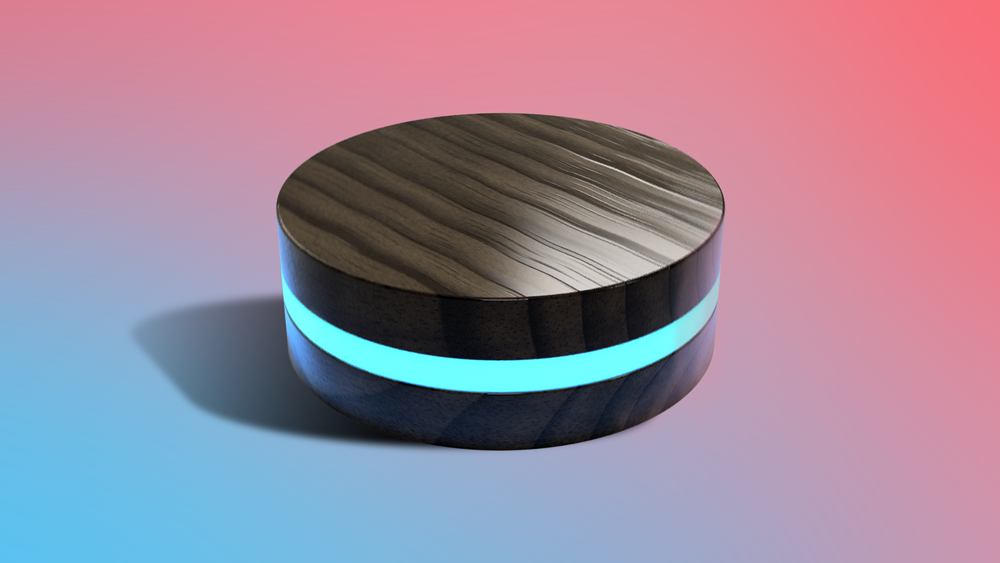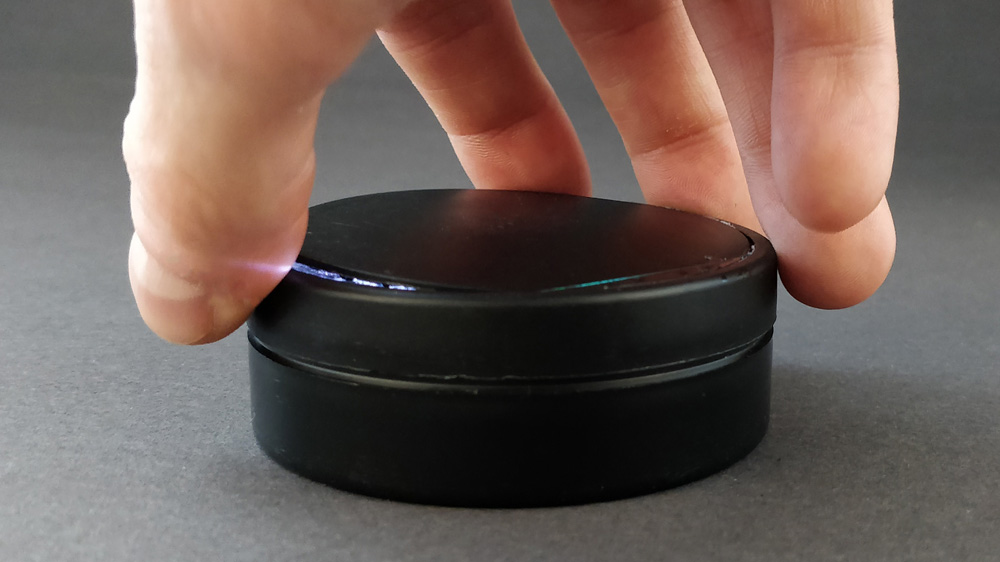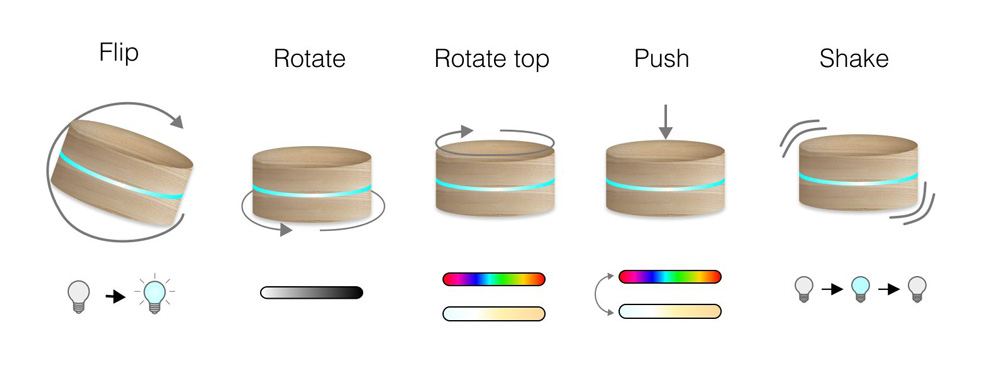master course project —
Opal
Physical and gestural interaction with smart lighting
Duration: 3 weeks

From light bulbs, security cameras, thermostats to robotic vacuum
cleaners, the home environment is getting more and more ‘smart’.
Within the reach of a mobile app, consumers have countless
possibilities to control and read out each connected device’s state.
This graphical representation of data is undoubtedly useful when it
comes to scalability and flexibility of including features and
displaying information. On the other hand, visually interpreting
these large chunks of information can become cognitively demanding
and interacting with a glass screen can also be rather boring.
Within the scope of smart lighting, we designed Opal to bring back
the joy of interacting with the physical, analogue, material. Opal
taps into the intuitivity of human motor skills – it is designed to
carry over interactions we have learned by manipulating physical
objects in our everyday environment.
Preserving the core functionality of a Philips Hue light setup,
users control connected light bulbs through a series of mechanical
interactions and bodily gestures. The light bulbs are turned on/off
by flipping the device upside down. Rotating the
entire device relative to its context controls the brightness of an
individual light bulb and rotating the upper half of the
device against its relative bottom half changes the color or warmth
of the light, which can be toggled between by pressing the
device. Finally, shaking the device lets users switch between
individual bulbs to control, indicated by a subtle blink from the
active bulb.
Programme
Interaction Design - Chalmers University of Technology
Project course
Tangible Interaction '19
Teammates
Simon Mare, Sten Rõngelep, Mike Shirnazar, Johannes Kjellberg, Jens Hulteberg




Related projects
© Sjoerd Hendriks All rights reserved.